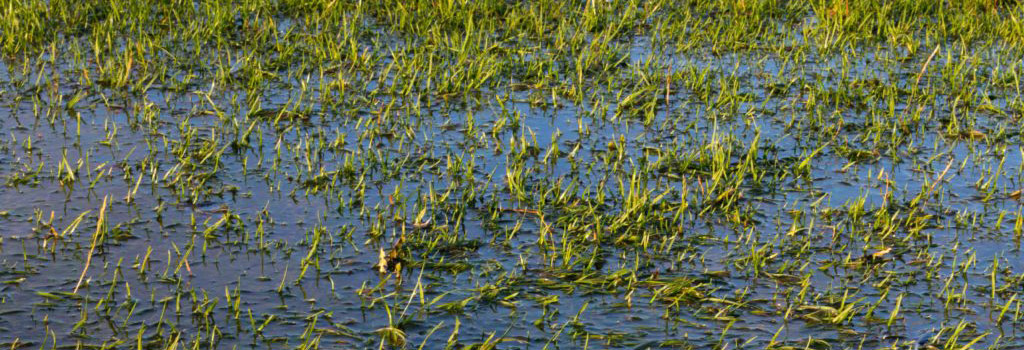As the leading providers of landscape maintenance services in Dallas we have seen many waterlogged lawns in the area. A waterlogged lawn is most gardener’s worst nightmare come true. Usually water logging happens over the winter months where heavy rainfall can leave lawns soggy and muddle underneath. Look for large pools of water or a squelchy feeling as you walk over your grass to spot problem spots and be sure not to walk on it anymore until the problem is corrected.
You also need to follow these helpful tips.
What causes a waterlogged lawn?
A waterlogged lawn is usually caused by a few issues, which are all due to water not being able to drain properly though the soil.
Compaction is a common cause of a waterlogged lawn because the soil becomes so tightly packed that it has no room for water to drain correctly. Compacted soil happens in high-activity areas, such as pathways or where there is lots of foot traffic. Soil that is rich in clay is also known for becoming waterlogged because it doesn’t allow a flow of air and water to drain easily.
Also, a poor root system can lead to a waterlogged lawn as you need a thick, well-developed and complex root system to be able to absorb the water falling onto the lawn. You can tackle this problem by over-seeding during the spring or early autumn, which will give you a thicker lawn.
How do you prevent waterlogging?
There a few steps you can take that will help you avoid getting a waterlogged lawn even if the rainfall is heavy.
Be sure to remove any excess water you can by using a broom to move the water to a nearby drain.
Make sure you regularly aerate your lawn. This is essential to preventing waterlogged lawns as this allows air into the deeper levels of the soil.
Hollow tine aeration is recommended, as that creates the best airflow and drainage system to the lower levels of the soil. Once the lawn has been aerated you can re-seed to allow the seeds plenty of opportunity to germinate and create a thicker, more complex root system and not so compacted.
By keeping a close eye on your lawn, you’ll be able to notice any problem areas where pools of water accumulate. This might be due to an uneven lawn where the water has nowhere to drain, or through a particularly compacted area. These areas could be leveled out and aerated to prevent waterlogging from taking place as well.
How do you fix a waterlogged lawn?
The first thing you need to do once your lawn is waterlogged is to make sure no one in the walks on the lawn, as that can churn up the grass and make the problem worse.
Wait for the majority of the water to evaporate, but if there is any left that won’t evaporate gently push it towards the side of the lawn or drain it with a broom. Make sure that the soil is moist but not wet before you do the following steps below:
Spike the lawn to aerate it using a hollow tine aerator. This will allow the majority of the water to drain through those holes.
You can then add a top dressing of horticultural sand or compost to further absorb extra moisture and build up a nice and healthy lawn. If the grass has been completely ruined it’s important to apply another layer of topsoil and seed more.
Remember if your lawn is waterlogged make sure not to walk because it will damage it even further and take the necessary steps to drain, aerate, and take the preventative steps for the future.

